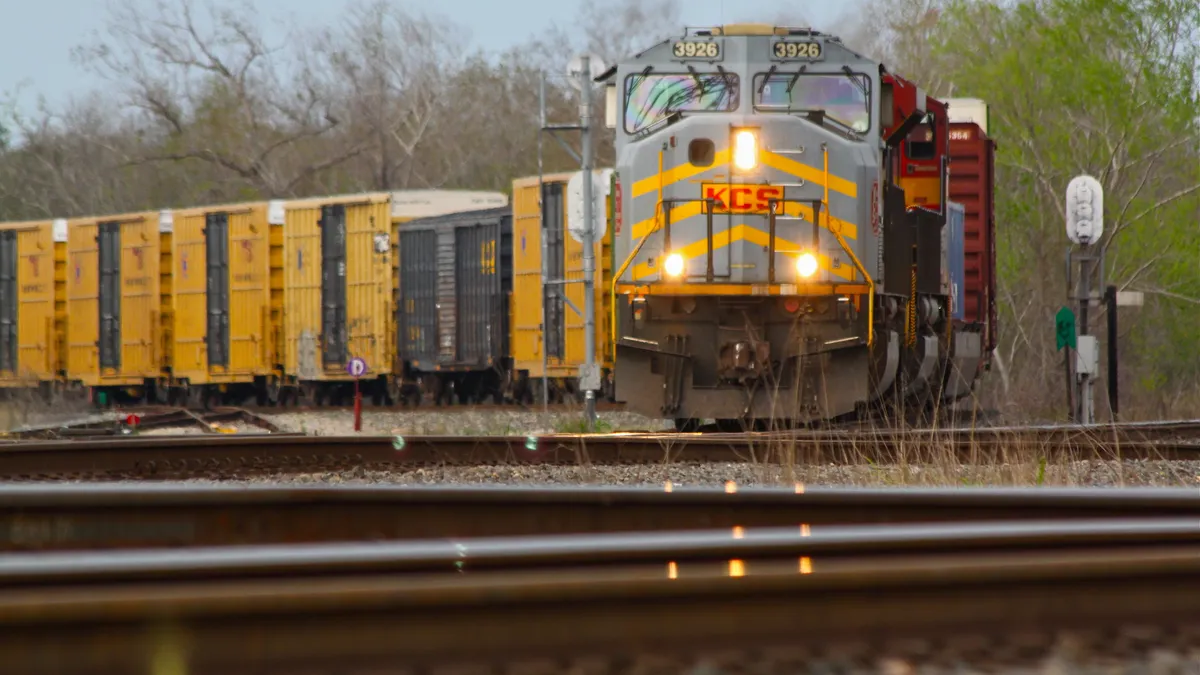Dive Brief:
- Some of Kansas City Southern's (KCS) metrics related to precision-scheduled railroading (PSR) metrics slipped in the second quarter compared to the first quarter, as volume began to return the railroad, executives reported on an earnings call Friday. Terminal dwell was up 3% quarter over quarter (down 4% year over year) to more than 20 hours.
- The railroad's volume rose 39% since bottoming out in May with cross-border freight up 55%, from its lowest point to June 30.
- The volume surge caused the railroad to lose some progress on dwell and operating ratio compared with the same period last year. "The key thing here ... is that, with that ramp-up of 39%, we are bound to have pockets of noise," said Sameh Fahmy, EVP for PSR.
Dive Insight:
"What a tough quarter," CEO Patrick Ottensmeyer said to open the call to discuss the first full quarter or coronavirus disruption for the railroad.
Overall carloads fell 21% compared to last year. Railroads have been trepidatiously discussing pandemic-related swings the volume for months.
PSR is an operating strategy that focuses on efficiency above all else and emphasizes leanness. The model gives some stakeholders concern about how the majority of Class Is, now fully emerged in the strategy, will contend with a dramatics return of volume. On a call in April, an analyst asked if PSR would affect the company's ability to "flex up" when volume returned. At the time, the railroad said it would be able to handle the increase.
KCS and other Class Is spent the spring months culling train starts to maintain efficiency as volume dropped. The railroad did this by building trains with mixed freight — from intermodal, automotive, manifest, grain trains, refined products, Fahmy said. In June, they started to add them back, with some loss of efficiency in the numbers. The adjusted operating ratio jumped from 63.7% in Q2 2019 to 65.2% in Q2 2020.
"I don't think anyone on this call has ever seen a 90-day period where business levels dropped so quickly, stayed at a stable level for a relatively short period of time and then recovered and responded so quickly thereafter," Ottensmeyer said.
Fahmy defended the upward dwell trend as satisfactory, given the circumstances of consolidating more trains on both sides of the U.S.-Mexico border in order to maintain train lengths. With full volume, the PSR Czar said the railroad still expects to maintain a 20% year-over-year cut in crew starts and locomotives in service. CFO Mike Upchurch pegged the cost savings at $35 million to $40 million per year.
"Well, whether we get to the volume that we had last year or we exceed it and ... we hope to exceed it, these cost reductions will stick," Fahmy said.
Feeding the railroad's optimism is a trend toward nearshoring supply chains, which will likely benefit the railroad eventually — though it will take time and better progress in fighting the pandemic before it becomes visible, Ottensmeyer said.














